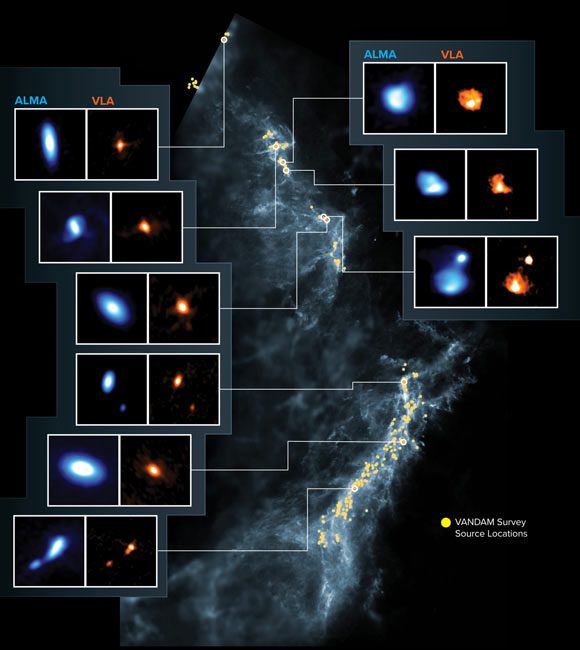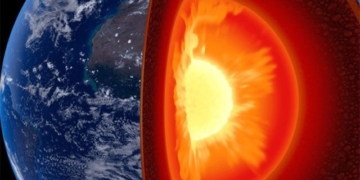VLA and ALMA, two heavy-duty radio telescope observatories of humanity, have gathered remarkable datasets about 97 young stars with protoplanetary disks – the future Solar Systems – in the Orion constellation.
A team of scientists led by Dr. Patrick Sheehan from Northwestern University and the National Radio Astronomy Observatory has utilized the Karl G. Jansky Very Large Array (VLA, located in New Mexico) and the Atacama Large Millimeter/submillimeter Array (ALMA, situated in the Atacama Desert of Chile) to gaze directly into one of the universe’s most fertile “star nurseries”.
According to Sci-News, this is the Orion Molecular Cloud, located 1,400 light-years from Earth, within the Orion constellation.

Young star systems with protoplanetary disks, some round and others irregular, recorded in radio wavelengths by ALMA (in blue) and VLA (in orange) – Photo: NRAO / AUI / NSF
The structure of this dense molecular cloud has facilitated the formation of large disks as material within the cloud collapses, rather than collapsing directly onto the star forming at the center of the disk.
This disk will gradually accumulate the star over time and itself may become a protoplanetary disk in the future, helping the star not to be solitary but to become the center of a new “Solar System.” In total, VLA and ALMA have detected signals from up to 97 nascent “Solar Systems.”
This discovery is part of the VANDAM survey, aimed at searching for and studying young stars.
Some of the stars among the 97 newly identified objects may be maturing astonishingly: astronomers have observed gaps in protoplanetary disks that are only about 100,000 years old. Typically, worlds like our Solar System take up to 1 million years for their protoplanetary disks to appear tidy and show gaps – the beginning of planet formation.
Some objects have quite unusual shapes that scientists believe are due to their recent formation, meaning the protoplanetary disk systems have not yet fully developed.
The findings have just been published in the Astrophysical Journal.


















































